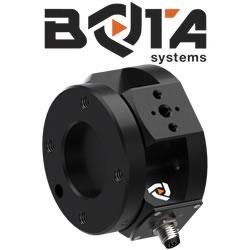Stanford's 'Jackrabbot' paves way for social robotics
Caitlin Ju for The Stanford Daily: Stanford researchers in the Computational Vision and Geometry Lab have designed an autonomously navigating robot prototype that they say understands implicit social conventions and human behavior. Named “Jackrabbot” after the swift but cautious jackrabbit, the visually intelligent and socially amicable robot is able to maneuver crowds and pedestrian spaces.
A white ball on wheels, the Jackrabbot is built on a Segway system and contains a computing unit and multiple sensors that acquire a 3-D structure of the surrounding environment. 360-degree cameras and GPS also enhance the robot’s navigation and detection capabilities.
To interact smoothly in public settings, the robot has to know how to avoid someone in a natural way, how to yield the right-of-way and how to leave personal space, among other skills. Cont'd...
Records 1 to 1 of 1
Featured Product

Bota Systems - The SensONE 6-axis force torque sensor for robots
Our Bota Systems force torque sensors, like the SensONE, are designed for collaborative and industrial robots. It enables human machine interaction, provides force, vision and inertia data and offers "plug and work" foll all platforms. The compact design is dustproof and water-resistant. The ISO 9409-1-50-4-M6 mounting flange makes integrating the SensONE sensor with robots extremely easy.
No adapter is needed, only fasteners! The SensONE sensor is a one of its kind product and the best solution for force feedback applications and collaborative robots at its price. The SensONE is available in two communication options and includes software integration with TwinCAT, ROS, LabVIEW and MATLAB®.

